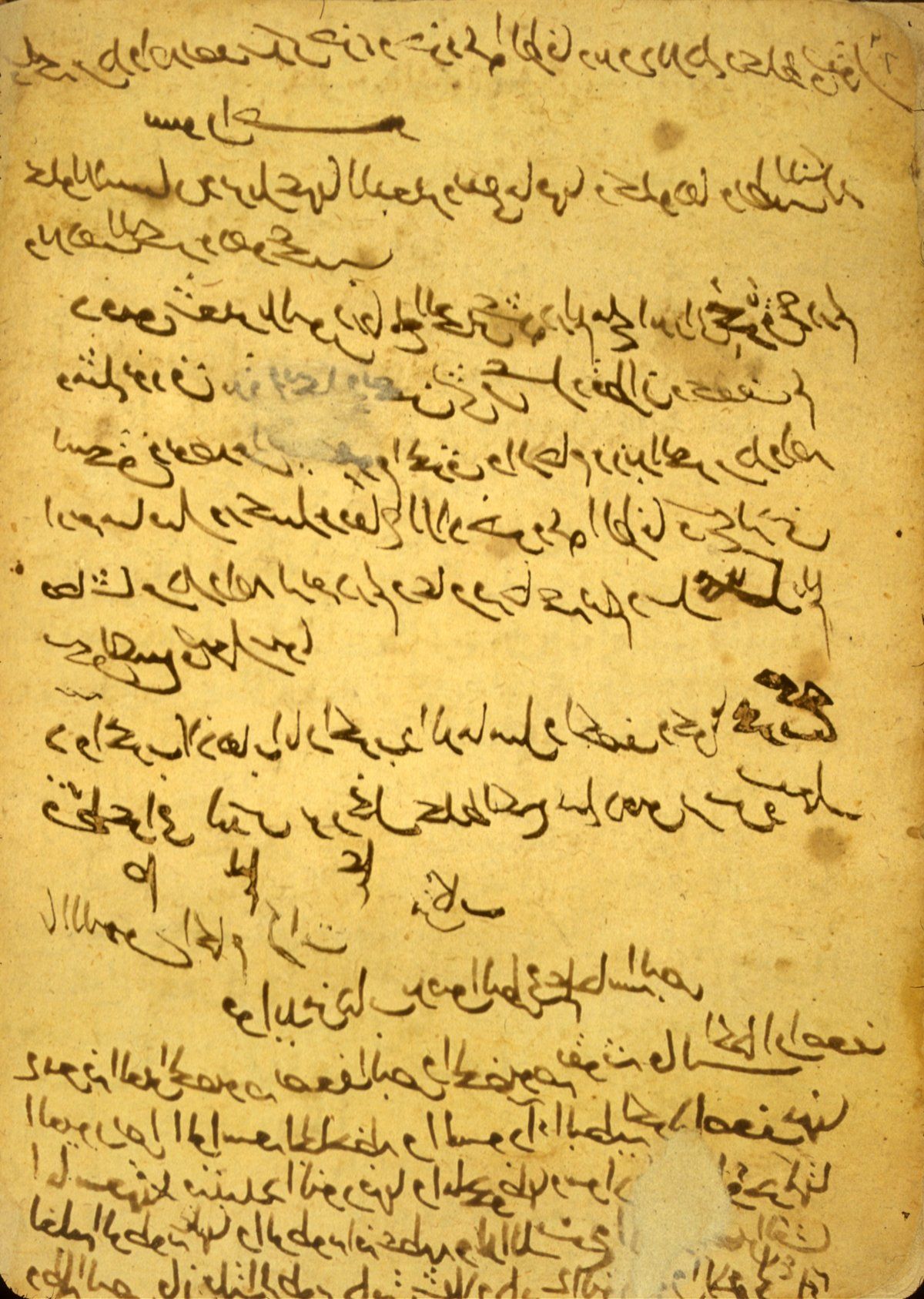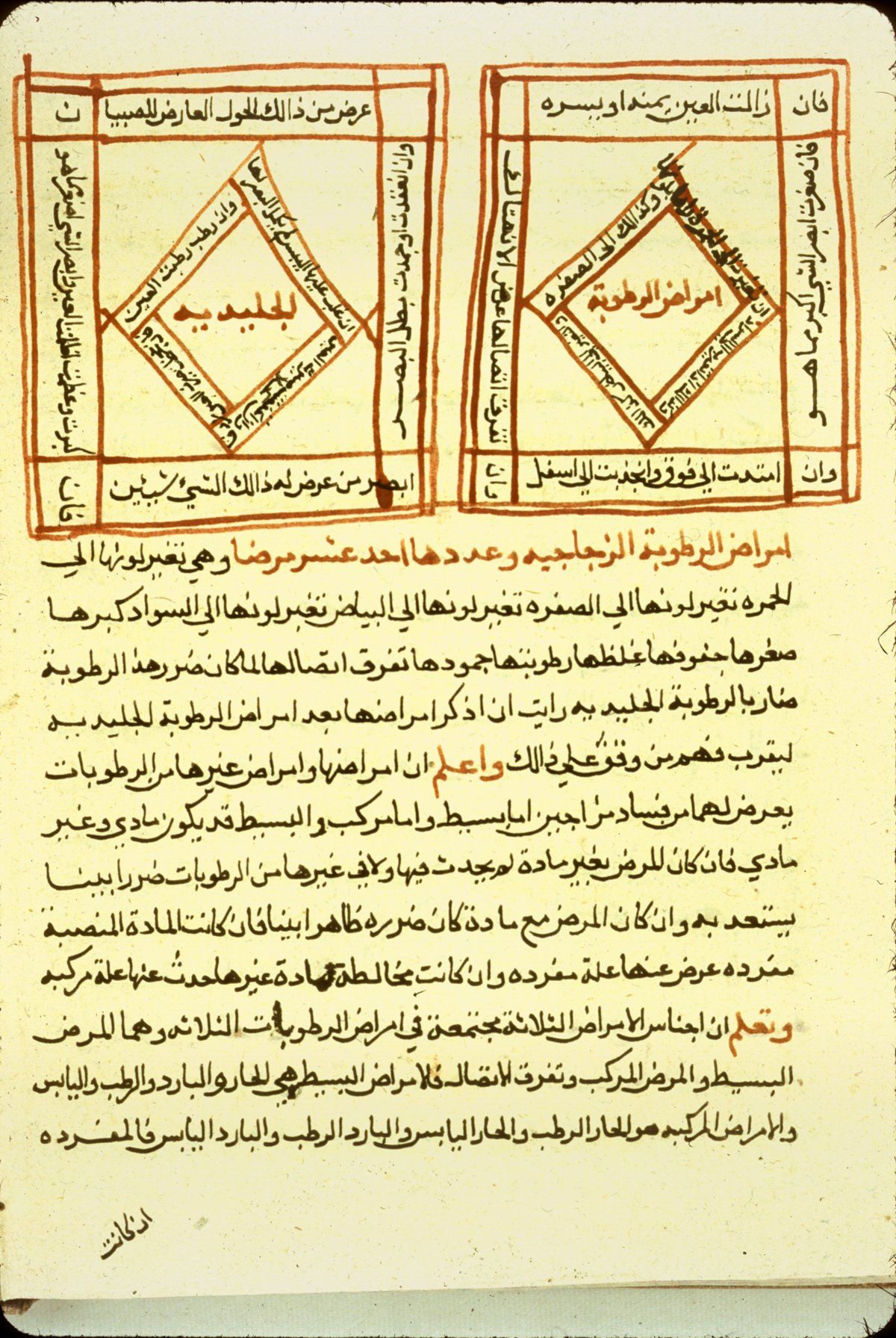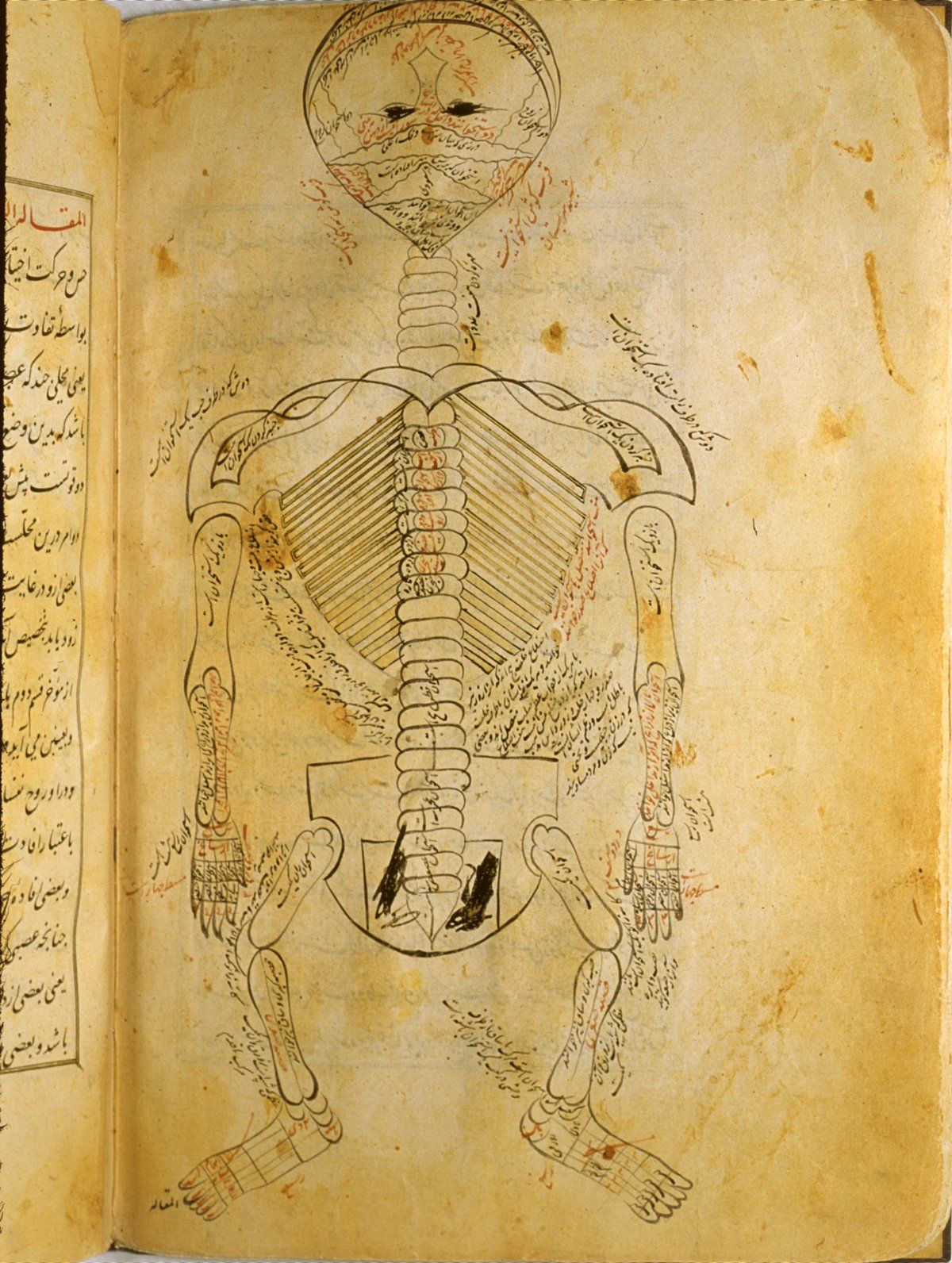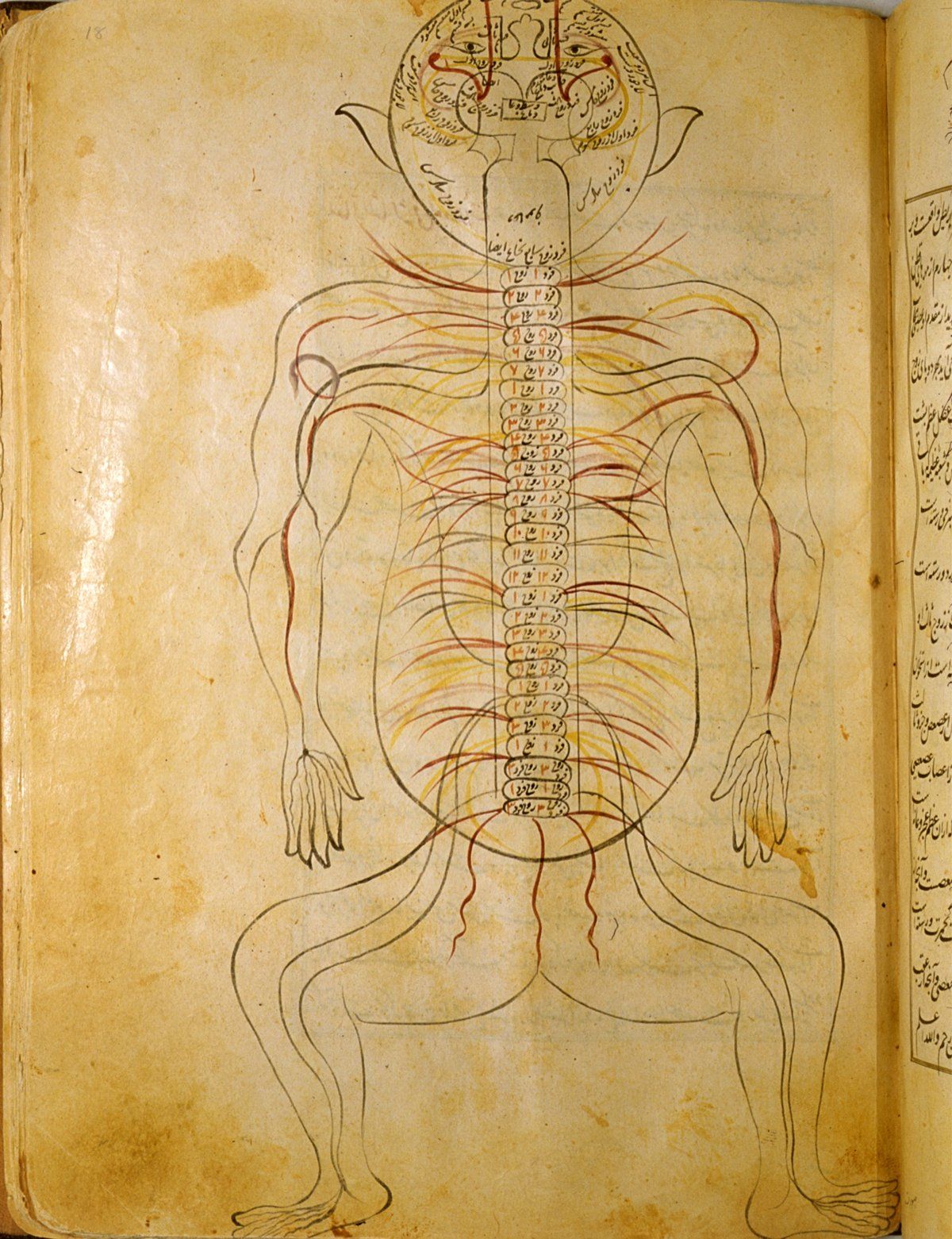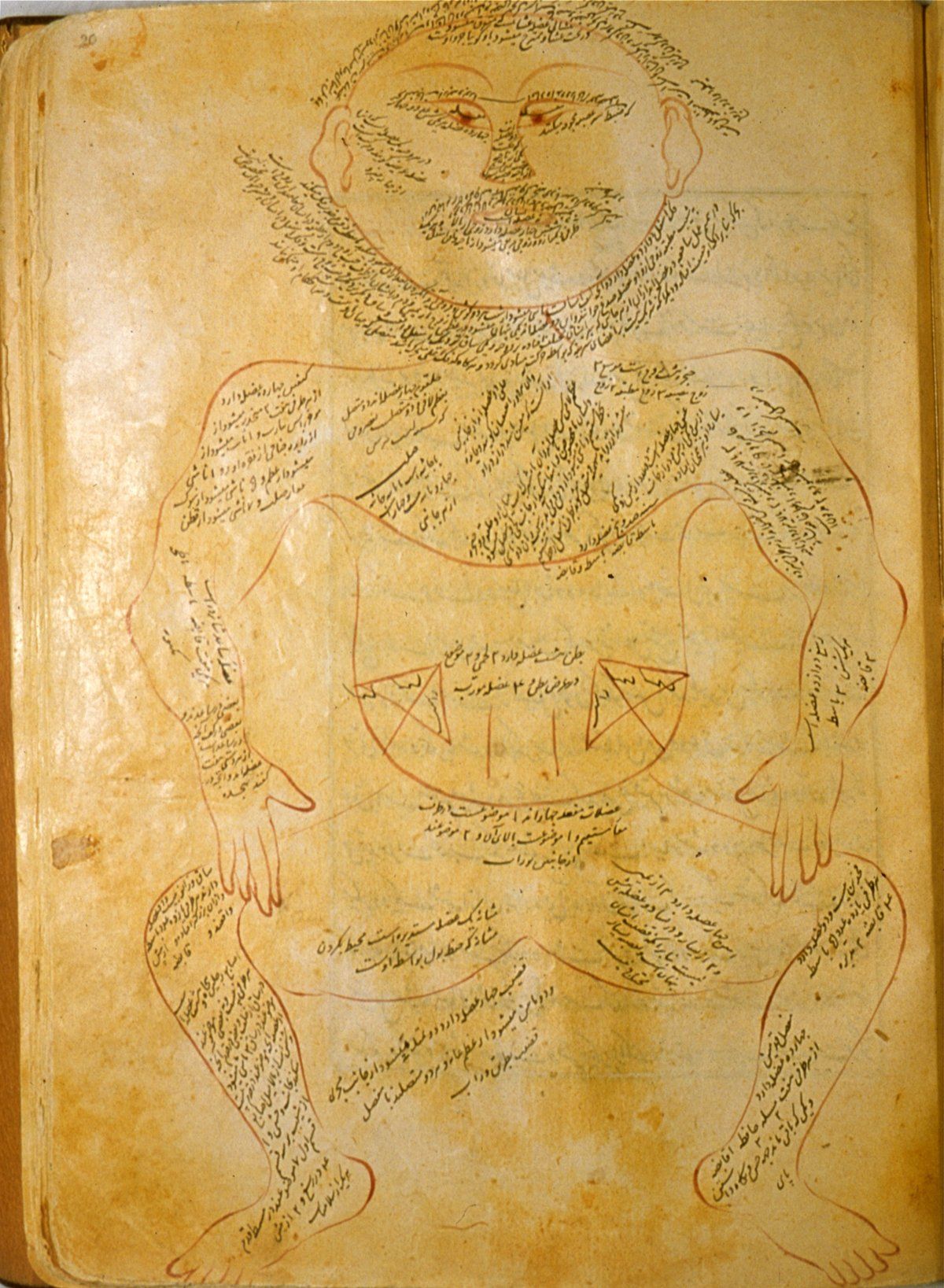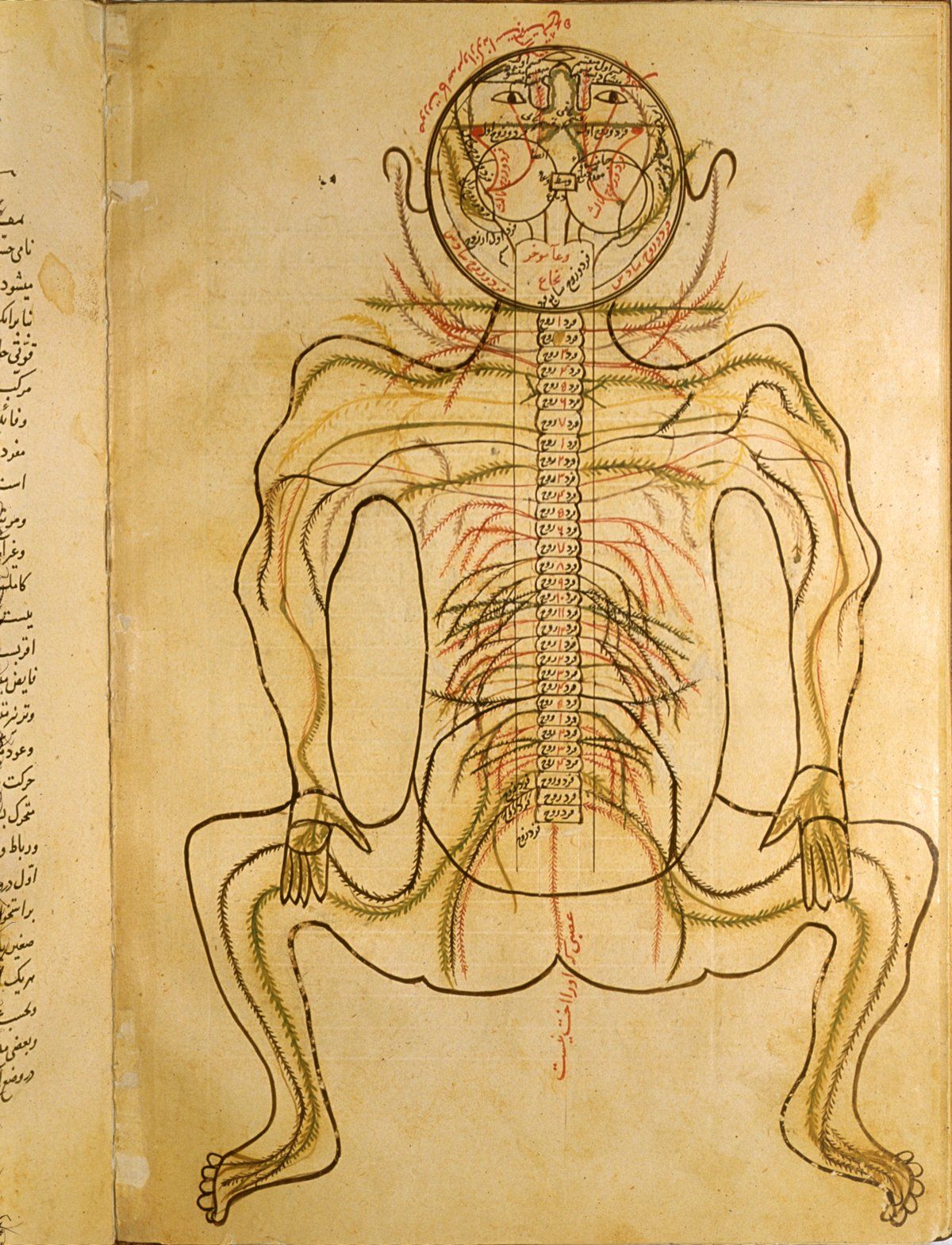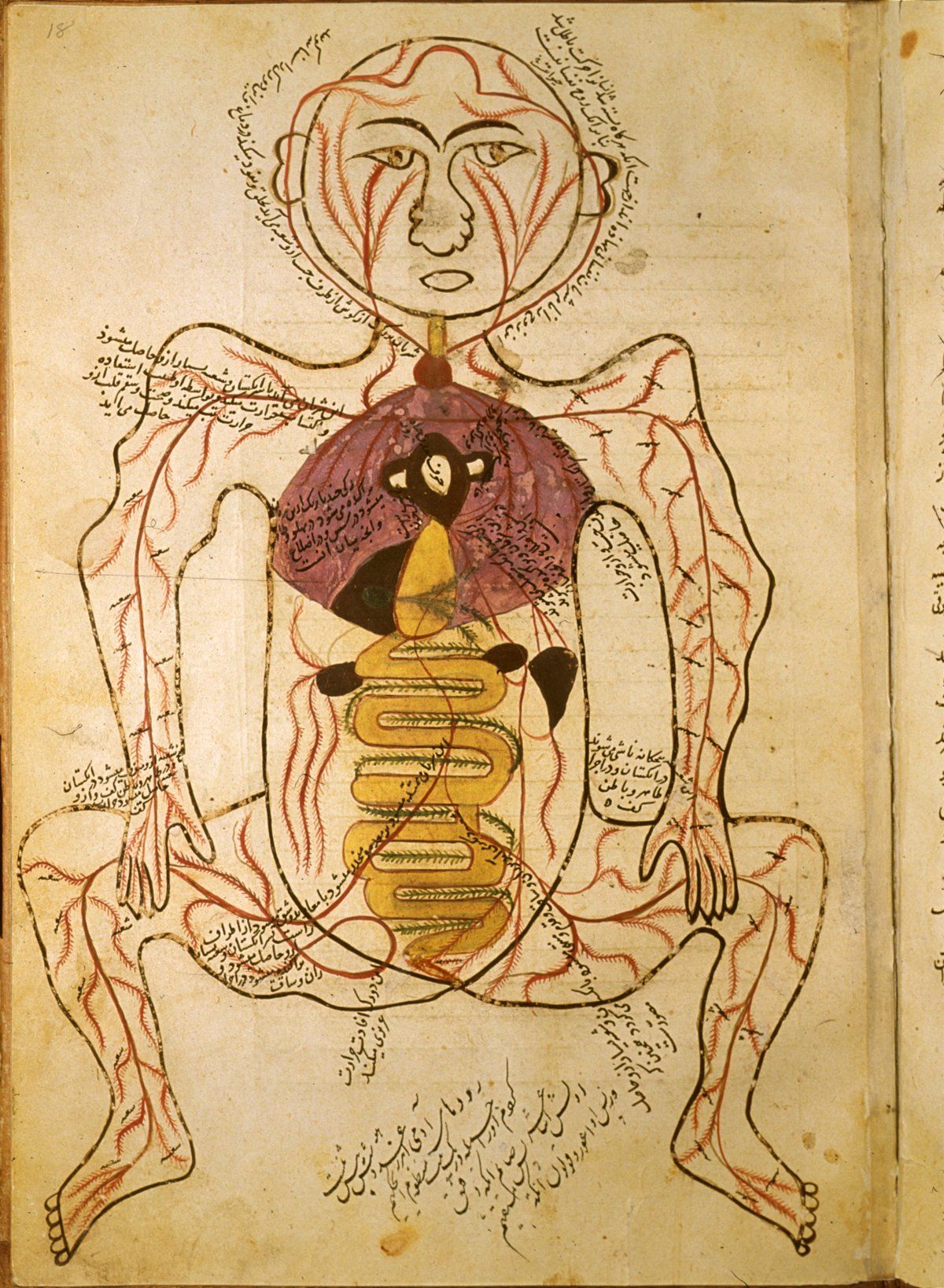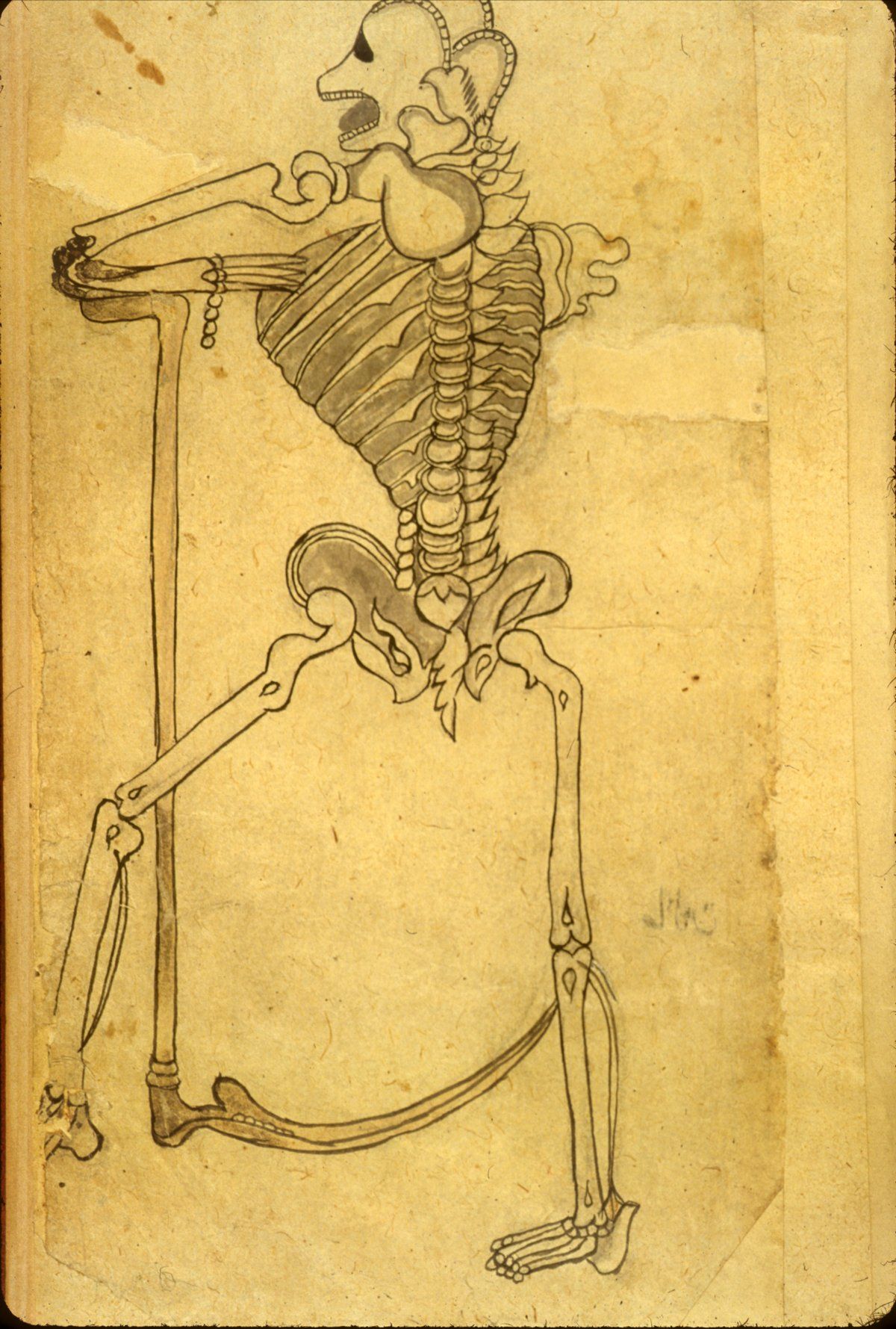Fawā’id min Kitāb Tadqīq al-nazar fī ‘ilm ḥāssat al-baṣar
The lower third of this folio contains the beginning of an Arabic treatise on weakness of vision and its treatment, apparently by the Spanish physician Ibn Wāfid al-Lakhmī, who died in 1074/467. This fragmentary copy is the only part of the treatise preserved today. Undated copy, probably 13th-14th century.
Kitāb al-‘Umdah al-kuḥlīyah fī al-amrāḍ al-baṣarīyah or al-‘Umdah al-nuriyah fī al-amrāḍ al-baṣarīyah
Visual acuity diagrams from the ophthalmological manual written in Egypt toward the end of the 14th century by Ṣadaqah ibn Ibrāhīm al-Shadhilī. The undated copy was completed sometime before an owner's note was placed in the volume in 1723/1135.
Tashrīḥ-i badan-i insān
The skeleton, viewed from behind with the head hyperextended so that the mouth is at the top of the page. Copy completed by scribe Ḥasan ibn Aḥmad, working in Isfahan, on 8 December 1488 (4 Muharram 894 H).
Tashrīḥ-i badan-i insān
The nervous system, with the figure drawn from the back and the nerves indicated in opaque watercolors. Copy completed by scribe Ḥasan ibn Aḥmad, working in Isfahan, on 8 December 1488 (4 Muharram 894 H).
Tashrīḥ-i badan-i insān
The muscle figure, shown frontally, with extensive captions describing the muscles. Copy completed by scribe Ḥasan ibn Aḥmad, working in Isfahan, on 8 December 1488 (4 Muharram 894 H).
Tashrīḥ-i badan-i insān
The nervous system, also viewed from the back with the head hyperextended. The pairs of nerves are indicated by inks of contrasting colours. An undated and unsigned copy, probably 15th or early 16th-century.
Tashrīḥ-i badan-i insān
The arterial figure, shown frontally with the internal organs indicated in opaque watercolours. An undated and unsigned copy, probably 15th or early 16th-century.
Ṭibb al-Akbar
A drawing in ink and light-gray wash of a skeleton leaning on a scythe. One of six leaves of anatomical drawings appended to a Persian translation of an Arabic medical compendium. The figure shows some knowledge of the illustrations of Vesalius's Fabrica (possibly available through intermediate interpretations). Undated and unsigned, probably 18th-century, India.

